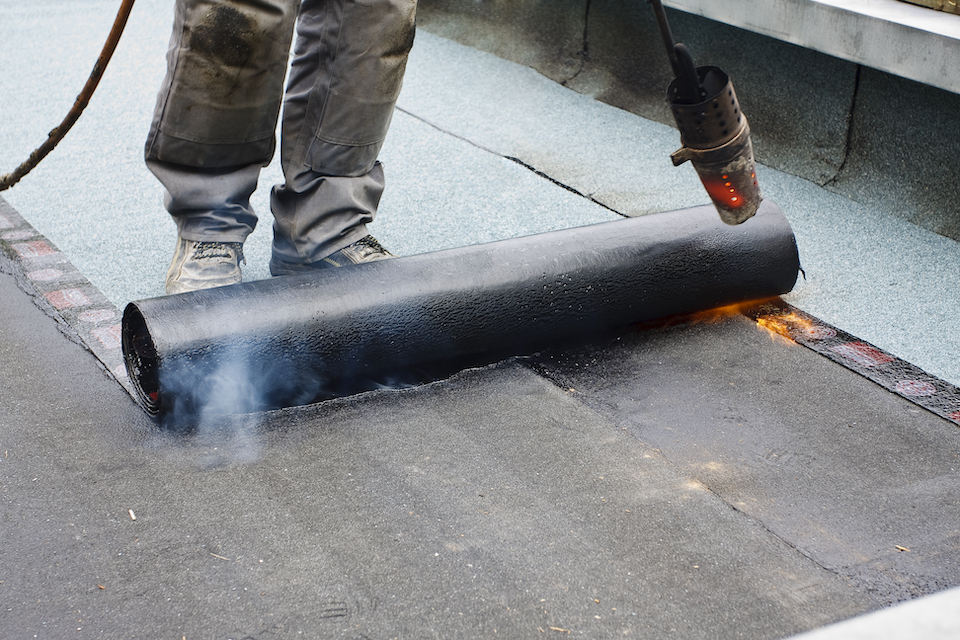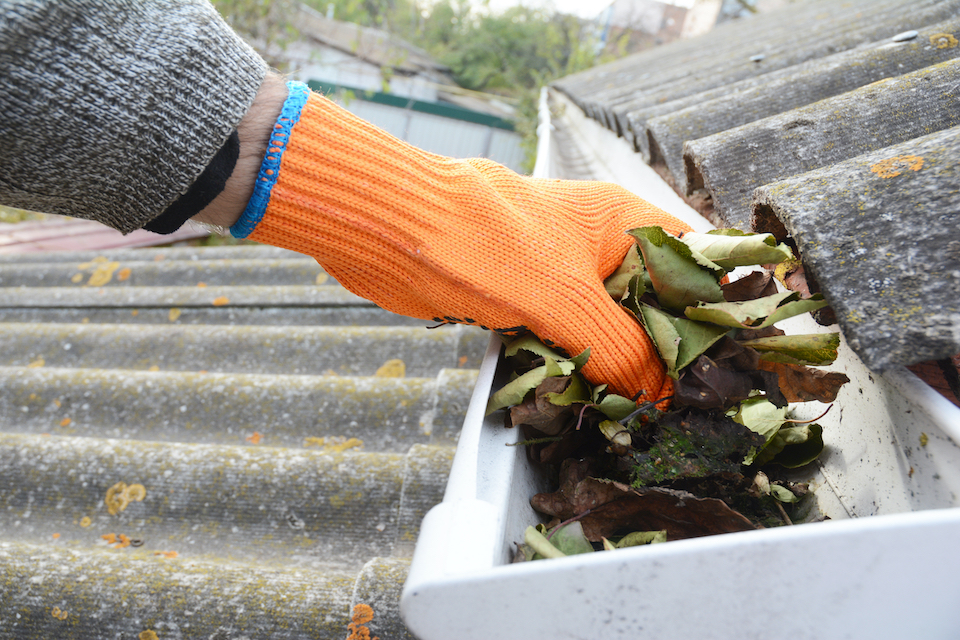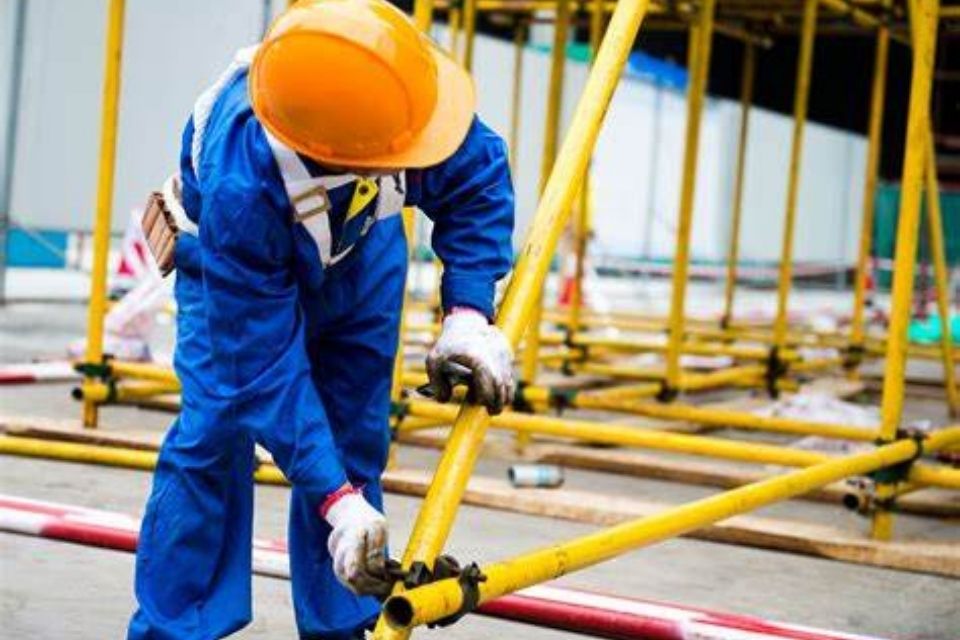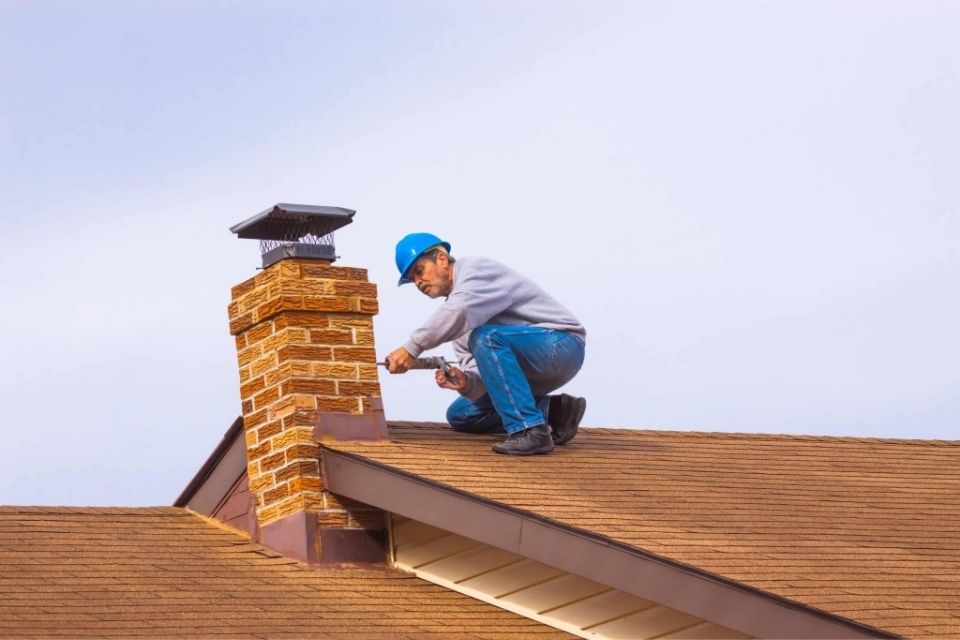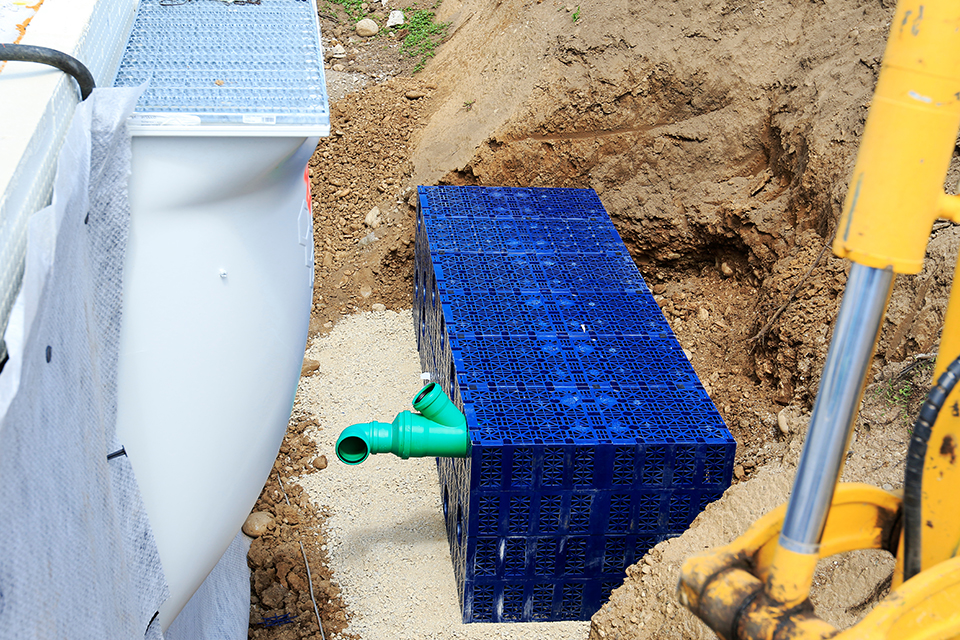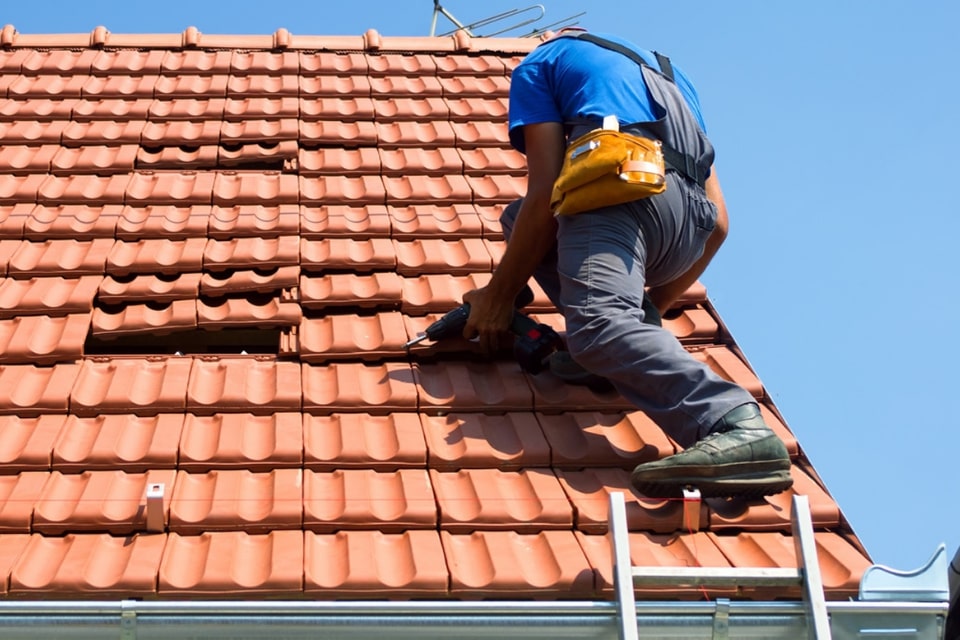What is Roofing Felt?
When installing or fixing issues on a roof, you may wish to know about roofing felt before you begin. Roofing felt is a protective layer, which is placed between the wooden roof deck and the outside roofing shingles.
By placing this layer between the wooden frame and the slates of the roof it adds an extra layer of protection, and creates a more sturdy and flawless base to adhere the slates to.
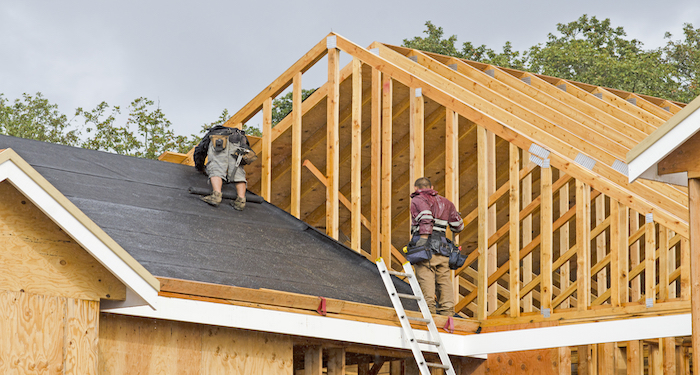
Roofing felt is often known as roll roofing or roofing tar paper. It consists of a base of material - either natural or synthetic - which is coated in a layer of protective solution. This gives the roofing felt a waterproof element but still allows it to breathe.
A common solution that is used to coat the roofing felt is bitumen (asphalt).
Allowing the roof to breathe is extremely important to remember when installing, as the building needs to have proper ventilation. If non-breathable materials are used when installing a roof, condensation from the home can rise and build up below the roofing.
If this continues to happen, the interior can become compromised and develop into a breeding ground for mould and mildew, and the perfect environment for rust. This can be a very expensive issue to fix.
Why is Roofing Felt Important?
Roofing felt is a great way of protecting your home from water damage. If your roof becomes damaged and water is able to leak through the gaps, roofing felt adds an extra layer of protection which repels water. This allows it drain it off the roof - preventing it from entering the home.
Think of it as a safeguard for your home - if part of your roofing fails there is a backup layer there to prevent further damages from happening. This goes for cold, icy climates as well as rainy ones.
If you’re living in an area which is known for ice building up on surfaces, roofing felt will protect your home from the melting ice waiting to cause havoc with damp and mildew.
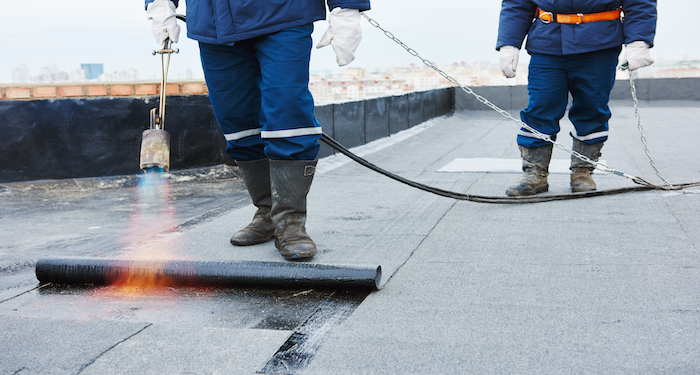
As well as being great for protection against the weather and changing climates, roofing felt can also prevent damage when builders are working on your roof.
It can also prevent resin stains from showing up on your roofing over time. Resin staining can appear on roofing when certain types of wood are used to create the framing. As the wood ages, it secretes small amounts of resin which can stain the areas around it. Roofing felt can act as an extra layer to prevent resin from reaching the tiles or slates.
Roofing felt can also increase the fire rating of your home. Some types of roof framing alone do not meet the standards of some building codes, which help prevent fire from spreading in the home.
Roofing felt can add an extra layer of protection to prevent any potential fires from burning through the roofing materials, which in turn could cause the roof to collapse.
Lastly, under tiles, roofing felt is a great way to create a smooth, even surface to install the tiles or slates. This can prevent the outlines of the roofing shingles from showing through the slates and creating unsightly patterns.
Think of roofing felt as the perfect blank canvas to attach your materials to.
As well as homes and other buildings, roofing felt is also great for installing on other outdoor and garden structures such as sheds, log cabins, kennels and more.
Roofing felt can be attached to any structure which may need a little extra protection from the outdoor elements. Roofing felt can be used both to cover flat roofs, or to underlay under slate or tiles on a framed roof.
Over one hundred years ago, before roof felt began to serve its current purpose, it was used a temporary roof solution for those who were in the midst of building their home or structure. Once the roofing was finished, the roofing felt would be removed.
If a homeowner was to carry out roofing repairs or install new roofing to their property, roofing felt would be used as a waterproof cover to protect the home while these fixes were being made.
In the 1930s, roofing felt started to become more commonly used within the actual structure rather than being a temporary solution.
In the last 25 years, roofing felt has become a necessity when building a home or structure, in order to add an extra layer of protection from the rain.
Many building codes recommend the use of roofing felt. It’s not a legal requirement to install roofing felt to your home, however many warranties and building companies add felt into their roofing packages to ensure their structures are more durable and withstand the elements.
By ensuring you protect your home as much as you can from the start you could save money in the long run.
Types of Roofing Felt
There are multiple different types of roofing felt, which are designed for different purposes when installing roofing.
The type of roofing felt used will depend on a few different factors, including the size of the project and whether this is a DIY job or one carried out by a professional.
The different types of felt roofing you can choose from are as follows:
High Water Vapour Resistance
High water vapour resistance roofing felt is also very commonly known as ‘Non-breathable Underlay’. This type of roofing felt has been around for over 100 years.
Usually they are made from more traditional materials such as bituminous, however they can also be created using more modern products such as polypropylene.
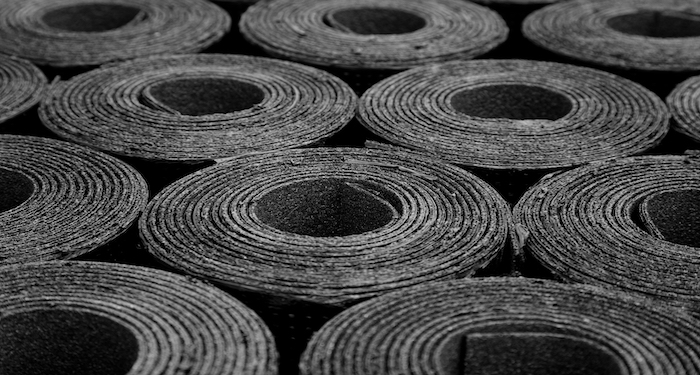
High water vapour resistance roofing and low water vapour resistance roofing are created with the same intentions in mind - preventing damp and mould from entering the home from the outdoor elements.
However the ways in which they work are different. High water vapour resistance roofing is more commonly used in older structures which have less insulation, cold ventilated pitch roof systems, and structures with flat roofs.
Older buildings and structures tend not to be heavily insulated, so the materials used for the roofing don’t usually need extra ventilation, as the house is able to excrete water vapour through other means.
Insulation is a method of keeping a building warm, however as well as holding in the warm air it tends to trap in water vapour. If a building has not been heavily insulated, the water vapour and warm air can escape and will not build up in the structure.
For this reason you will often notice that older buildings tend to be a lot colder than newer ones.
This type of underlay is a cheaper method of protecting your home from water damage. Often, when used in conjunction with low level eaves and high level ventilation systems, this kind of felt can be used as a more cost effective solution even in some insulated homes.
Pros
- Fully waterproof - prevents rain from entering the home
- Prevents ice from melting and entering the home
- Creates a smoother canvas for tiles and slates
- Prevents resin staining
- Increases fire rating
- Prevents damage to roof
- A backup layer if roofing becomes damaged
- Cheaper than other methods
- More traditional method, therefore more thoroughly tested
- Great method for older buildings and homes with other means of ventilation
Cons
- Needs extra ventilation measures installed alongside it
- Without extra ventilation, there is an increased chance of damp and mould occurring in the home
Low Water Vapour Resistance
Low water vapour resistance roofing felt is commonly known as a type of ‘Breathable underlay’ or ‘Breathable membrane’. This type of roofing felt carries out the same primary functions as high water vapour resistance roofing felt, with the added bonus of being constructed from materials that allow the felt to ‘breathe’.
This means that water vapour can pass through the material fibres and structure, instead of being trapped inside your home.
This means that as well as preventing water from entering your home from the outdoor elements, it also prevents condensation from building up below the roof and causing damp, mould and mildew.
Once your home develops the issue of damp and mould, it is difficult to correct and can be very costly to fix.
The buildings that are more likely to need low water vapour resistance felt are properties that have been heavily insulated, which is mainly newer buildings, remodels or more modern structures.
Insulation creates more heat in the home as it stops the warm air from escaping, however it also has a habit of trapping in water vapour as well.
These more insulated structures need roofing felt that allows the water vapour to pass through with ease and allow ventilation through the top of the home.
Pros
- Waterproof - prevents rain from entering the home
- Prevents ice from melting and entering the home
- Allows water vapour to pass through, preventing mould and rot inside the home
- Creates a smoother canvas for tiles and slates
- Prevents resin staining
- Increases fire rating
- Prevents damage to roof
- A backup layer if roofing becomes damaged
- Great method for newer buildings with heavy insulation
- Newer, more modern technology and materials
- Great for extra means of ventilation
Cons
- More costly than high vapour resistance methods
- Slightly harder to install than high water vapour resistance felt
Airtight
As well as being air and wind-tight, and helping prevent rain from entering the building, airtight roofing felt is a great way to keep humidity out of your home.
If you’re living in a hotter, more humid climate, quite often the water vapour can creep into buildings and structures, which can cause damp and mould over a longer period of time.
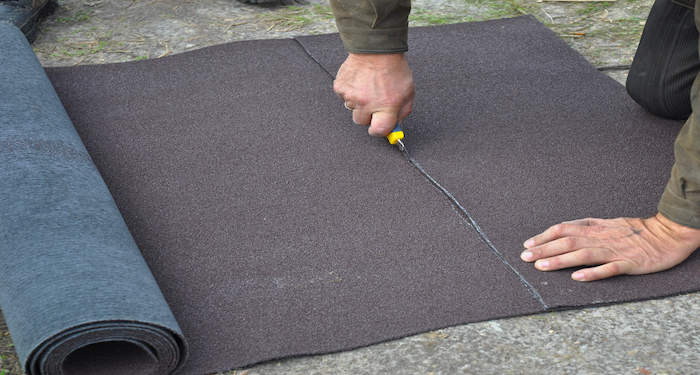
This kind of roofing membrane is best for use in more humid countries. However as some countries suffer with conditions of extreme cold in the winter and extreme humidity in the summer, it is possible to purchase roofing felt that is expansive and contracts depending on the weather outside.
This type of roofing felt can detect the outdoor temperature and alter its form appropriately.
Pros
- Waterproof - prevents rain from entering the home
- Prevents ice from melting and entering the home
- Keeps humidity out of home
- Great for countries with humid climates, or extreme weather conditions
- Some Airtight felts can detect change in climate and adjust accordingly
- Creates a smoother canvas for tiles and slates
- Prevents resin staining
- Increases fire rating
- Prevents damage to roof
- A backup layer if roofing becomes damaged
- Newer, more modern technology and materials
Cons
- A more expensive option to roofing felt
- Not always great for buildings with high insulation as most airtight options don’t allow the roof to breathe
Air Permeable
Air and vapour permeable are another type of breathable underlay, which has a slightly different function to low water vapour resistance felt. It is often labelled as ‘Air Open’ underlay.
This type of roofing felt is the most modern, as it is a fairly new product on the construction market.
Air and vapour permeable felt has been classed by manufacturers as a solution to all your ventilation needs. Although this product has not yet been recognised by the ‘Code of Practice for the Control of Condensation’, manufacturers claim that when using this product no other means of roof ventilation are necessary.
As it is very new to the market and doesn’t have the sufficient tests in place, it is currently classified within the low resistance category.
This type of roofing felt would mainly be used in more modern homes and structures that have been insulated, that are in need of ventilation. In general, this type of roofing felt is a lot more expensive than the average low vapour resistance membrane.
Pros
- Waterproof - prevents rain from entering the home
- Prevents ice from melting and entering the home
- Allows water vapour to pass through, preventing mould and rot inside the home
- A solution to all issues - no extra ventilation needed
- Creates a smoother canvas for tiles and slates
- Prevents resin staining
- Increases fire rating
- Prevents damage to roof
- A backup layer if roofing becomes damaged
- Newer, more modern technology and materials
Cons
- Full testing not yet done
- Not fully recognised by British Standards
- A lot more expensive than other methods
- Easier to install
Green Roof Felt
Green roofing felt is most commonly used for gardening and outdoor structures such as sheds, summerhouses and kennels.
This type of felt is a lot cheaper than other types of felt, due to having a mineral base, and it being more of a gardening tool.
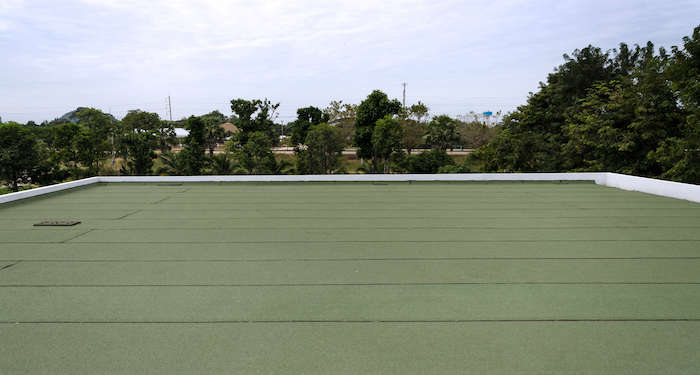
This kind of felt is easy to apply on your own if you’re looking at doing a bit of DIY and gardening, and comes in a green colour to blend in with the outdoor surroundings.
While it is still a great tool to waterproof your structure, it should only be used for small outdoor and garden structures, and not for home construction.
Pros
- Waterproof
- Best for outdoor garden structures such as sheds and kennels
- Creates a smoother canvas for shed roofing...etc
- Colour blends in with surroundings
- Prevents damage to roof
- A backup layer if roofing becomes damaged
- A lot cheaper than other felts
- Very easy to install and DIY
Cons
- Only for use on smaller outdoor and garden structures such as sheds, kennels and summer houses.
- Not as durable as other types of felt
- May need a lot more maintenance
Roofing Felt for Sheds
As well as being used on homes and large structures, roofing felt can be installed in your garden shed.
Although it is possible to use construction based felts for your shed roofing, there are some great options specifically designed for gardening use. We’ll be going into detail on the best roofing felt for sheds.
The cheapest and easiest option to go for when waterproofing your garden shed is green roof felt. This kind of felt has been designed with gardening in mind, in all its aspects.
This kind of felt is a lot cheaper than the likes of airtight roofing felt and air permeable roofing felt, due to the materials and usage.
You can purchase green roof felt from most DIY and gardening centres, and it is extremely easy to install yourself with a few nails or staples. It comes with a green colour to blend in with the outdoor surroundings.
Of course, depending on the climate you live in you may wish to use another method to waterproof your shed. There are such things as plastic roof tiles which have become prevalent on the market in modern days.
These are made from recycled plastic, and come in small rolls which you attach to your shed roof. The plastic tiles interlock with each other to ensure that the roof stays waterproof. These are very easy to install at home, and give a more ‘tiled’ roof look to match your home.
As most sheds are made of wood, living in a humid climate can often increase the risk of mildew, and mould. To avoid the wood rotting over time, you may wish to use either an Airtight or low water vapour resistance roofing felt to counteract the problem.
A low water vapour resistant felt would allow any humidity and water vapour inside the shed to pass through, allowing more ventilation through the structure. The use of an Airtight membrane would help to keep the humidity from entering the shed which in turn would prevent the wood from rotting.
These methods would work out more expensive than normal green roof felt, however may save you money in the future if you live in a climate that can become very humid.
Torch-On Roofing Felt
Installing torch-on roofing felt is a job best left to the professionals. This method involves using a blowtorch to weld three separate layers of roofing felt to the roof surface.
The outcome of this is a complete sealed surface in which water cannot penetrate. This method definitely creates a more heavy duty roofing felt.
When using this method of waterproofing your roofing, three separate layers are welded onto the surface. These three layers are: a vapour control sheet, reinforced felt and then a top sheet with a mineral finish.
Each layer of bitumen is modified to fit its own purpose, coming together to create one heavy duty layer. On home and building roofing, all three layers must be installed for the roofing to pass building regulations.
For other structures such as garages, sheds, summer houses and kennels only two layers are usually necessary.
This method has become one of the most common and well-known waterproofing methods in present day, and it is very prevalent in the UK.
You will quite often see new-build homes, schools, community buildings, and offices with this system. You can recognise the use of Torch-On roofing felt by the flat, grey appearance of it. Quite often it is a technique used for buildings with flat roofing.
Torch-on roofing felt is one of the quickest and easiest tasks for professional roofers. It is also perfect for weather conditions in the UK as this kind of work can be carried out in both dry and wet conditions, making it perfect for someone who wants the job done quickly and efficiently.
Torch-on roofing felt can be applied to many different materials, such as concrete and metal, making it very versatile. It can be applied to timber framing, however the wood needs to be primed beforehand.
The task of welding on three layers using heat creates a very waterproof surface that does not usually need much maintenance.
This method is perfect for anyone needing a job done quickly and efficiently, at a lower cost. Although, this kind of felt doesn’t always look the most attractive, as the roofing is essentially covered in felt rather than tiles and slates, it gets the job done and is extremely reliable.
Sarking Felt
In the construction industry, ‘sarking’ has multiple meanings. A common one being a layer of membrane such as felt, reflective foil or polystyrene that is placed below the outside roofing materials. The outcome depends on the type of sarking material used.
Sarking felt provides extra weather resistance and repels water, ensuring it doesn’t leak through gaps in the roofing tiles or slates. Sarking in terms of reflective foil can be used to reflect heat to keep a building cool.
Sarking materials can also be used to add an extra layer of insulation to the building.
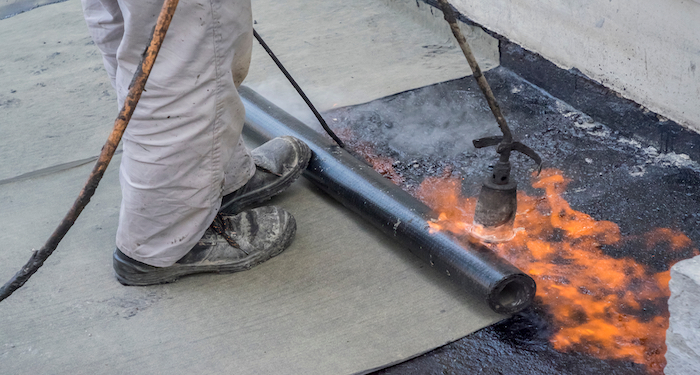
Sarking felt is most commonly used to repel water from the roof to prevent any water drainage into the home. However, it can also reduce draughts in windy conditions, stops any dust from entering the premises, and can add an extra layer of insulation to homes such as older buildings that require some more warmth.
Another meaning for sarking, is sarking board. This is a softwood board that can be attached to the wooden beams and framing of a building to add extra strength to the structure.
Sarking board is mainly used in places with more extreme weather conditions, for example areas that suffer with strong wind or rain.
Roof Felt Adhesive
Some roofing felt jobs rely on nails and even staples to keep the membrane attached to the materials underneath. However one great method used by many professionals is the use of roofing felt adhesive.
This is the use of a glue-like substance which adheres the roofing felt to the materials underneath - usually the wooden framing. The use of adhesive ensures that all the edges are secured down, which helps in waterproofing the structure.
Roofer Costs
When installing a roof, the best option is to go with a professional rather than trying your hand at a DIY job.
The roof is a very important part of your home, and if the job is not done correctly, you run the risk of having some major structural issues in the future.
One of these structural issues could be a mass amount of damp from both leaks, and condensation within the home.
These issues are not to be taken lightly, as if they are not resolved quickly they can turn into something that will be extremely costly and time consuming to fix.
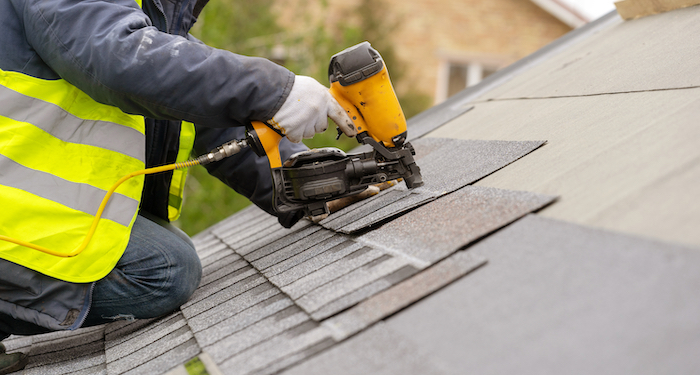
The average cost to replace a whole roof is around £5,300. You can expect to pay around £150-£250 daily for a professional roofer, however this all depends on the size of the home, and the amount of work that needs to be done.
Semi-detached homes tend to be smaller and take less time to complete, and as the majority of homes in the UK are either semi-detached or terraced the average cost for this type of housing is around £5000.
However if you live in a detached home, you’re more likely to be paying an average of £8,250.
This pricing is extremely variable and depends on the size of your home, state of the roof, whether you need a repair or a brand new roof installed, and the location of the home.
Homes in the south such as London will cost more to remodel and restore. So if you’re living in Surrey, Cambridge, Winchester or another southern city, be prepared for a higher price range!
FAQs
Q: How long does roofing felt last under tiles?
A: The lifespan of roofing felt varies depending on the grade of felt used and quality of the job done.
Most manufacturers state that their roofing felt will last a minimum of 10 years, however this is susceptible to change with the quality of the felt.
Better quality felt can last decades if it has been installed correctly and is well maintained.
Q: What is cap sheet roofing felt?
A: Cap sheet roofing felt is very commonly used when installed roofing felt through the Torch-On method.
The cap sheet is essentially the top layer of bitumen (felt), which has been modified to be the most waterproof layer. Two other layers are used underneath the cap sheet felt layer, both of which are modified for their own purposes.
The first layer is a vapour control sheet, and the second layer is reinforced felt to create a steady surface.
Q: What is roofing felt made of?
A: Roofing felt can be made out of a number of different materials, however the most common material used is Bitumen.
Bitumen is otherwise known as asphalt - a black, sticky liquid which is basically a semi-solid form of petroleum.
Bitumen is mainly used for paving, so you will be able to find it in roads, runways, car parks, and footpaths.
Q: How much roofing felt do I need?
A: Roofing felt is usually sold in rolls of one square per roll. When figuring out how many rolls of roofing felt you will need, one square is equal to 100 square feet, which makes it easy to calculate once you’ve measured the surface area you will be covering.
Always make sure you have more than enough to cover your roofing, as the roofing felt edges need to overlap with each other slightly to ensure they are fully waterproof.
Q: Can I DIY my own roofing felt?
A: If you are planning on installing a new roof on your home, it is recommended you seek professional help rather than attempting to carry out a DIY job.
Installing felt on your own roof can be both dangerous in terms of health and also risky in terms of getting the job done correctly. If the job is not done to a sufficient standard, you run the risk of letting damp build up in your home which may cause major structural damage.
If you are planning on adding roofing felt to a shed, kennel or other garden structure, this job is a lot easier for someone with little or no roofing experience.
Sources
- https://www.iko.com/na/pro/building-professional-tools/learn-about-roofing/the-purpose-of-roofing-felt/
- https://alldivisionbuilding.co.uk/blog/what-does-roofing-felt-do/
- https://ajwdistribution.com/what-roofing-underlay-should-i-use/
- https://www.isocelluk.co.uk/products/airtight-membranes/
- https://www.designingbuildings.co.uk/wiki/Sarking_in_roof_constructions
- https://roofers-rates.com/prices/
- https://www.ikogroup.co.uk/2018/08/10/how-to-select-the-right-roofing-cap-sheet/
- https://energyeducation.ca/encyclopedia/Bitumen

